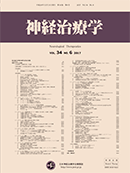Volume 33, Issue 3
Displaying 51-71 of 71 articles from this issue
-
2016Volume 33Issue 3 Pages 440-442
Published: 2016
Released on J-STAGE: November 10, 2016
Download PDF (282K) -
2016Volume 33Issue 3 Pages 443
Published: 2016
Released on J-STAGE: November 10, 2016
Download PDF (218K)
-
2016Volume 33Issue 3 Pages 444
Published: 2016
Released on J-STAGE: November 10, 2016
Download PDF (232K) -
2016Volume 33Issue 3 Pages 445
Published: 2016
Released on J-STAGE: November 10, 2016
Download PDF (225K) -
2016Volume 33Issue 3 Pages 446
Published: 2016
Released on J-STAGE: November 10, 2016
Download PDF (208K) -
2016Volume 33Issue 3 Pages 447
Published: 2016
Released on J-STAGE: November 10, 2016
Download PDF (233K)
-
2016Volume 33Issue 3 Pages 448
Published: 2016
Released on J-STAGE: November 10, 2016
Download PDF (249K) -
2016Volume 33Issue 3 Pages 449-452
Published: 2016
Released on J-STAGE: November 10, 2016
Download PDF (960K) -
2016Volume 33Issue 3 Pages 453-458
Published: 2016
Released on J-STAGE: November 10, 2016
Download PDF (464K) -
2016Volume 33Issue 3 Pages 459-463
Published: 2016
Released on J-STAGE: November 10, 2016
Download PDF (480K) -
2016Volume 33Issue 3 Pages 464-465
Published: 2016
Released on J-STAGE: November 10, 2016
Download PDF (287K)
-
2016Volume 33Issue 3 Pages 466-469
Published: 2016
Released on J-STAGE: November 10, 2016
Download PDF (405K) -
2016Volume 33Issue 3 Pages 470-474
Published: 2016
Released on J-STAGE: November 10, 2016
Download PDF (1037K) -
2016Volume 33Issue 3 Pages 475-477
Published: 2016
Released on J-STAGE: November 10, 2016
Download PDF (332K)
-
2016Volume 33Issue 3 Pages 478-479
Published: 2016
Released on J-STAGE: November 10, 2016
Download PDF (657K)
-
2016Volume 33Issue 3 Pages 480-483
Published: 2016
Released on J-STAGE: November 10, 2016
Download PDF (1795K) -
2016Volume 33Issue 3 Pages 484-487
Published: 2016
Released on J-STAGE: November 10, 2016
Download PDF (400K)
-
2016Volume 33Issue 3 Pages 488-490
Published: 2016
Released on J-STAGE: November 10, 2016
Download PDF (2377K)
-
2016Volume 33Issue 3 Pages 491-494
Published: 2016
Released on J-STAGE: November 10, 2016
Download PDF (317K) -
2016Volume 33Issue 3 Pages 495
Published: 2016
Released on J-STAGE: November 10, 2016
Download PDF (147K) -
2016Volume 33Issue 3 Pages 496
Published: 2016
Released on J-STAGE: November 10, 2016
Download PDF (142K)
